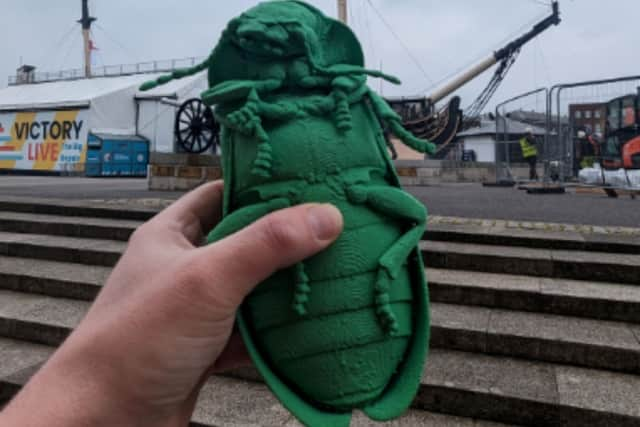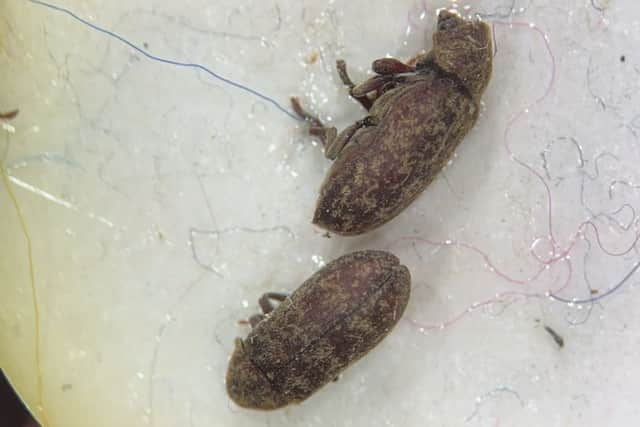HMS Victory: Giant Deathwatch beetle created by Portsmouth conservationists on Royal Navy Museum project
and live on Freeview channel 276
The replica was put together by using 3D printing on behalf of the National Museum of the Royal Navy. Restoration work is underway to repair and preserve HMS Victory, with £45m being allocated as part of The Big Repair.
Academics are involved in the scheme and are uncovering a wealth of new information about the behaviour of deathwatch beetles, which plagued Vice-Admiral Lord Nelson’s favourite warship since they were first identified within her timbers in 1932. Dr Charles Wood scanned the original insect, which was then scaled up for the model.


Advertisement
Hide AdAdvertisement
Hide AdBrooke Oakley, HMS Victory conservation scientist, said: “The idea behind the 3D printing was to have a visual tool to show people deathwatch beetles. The deathwatch beetles are a huge part of Victory’s big repair, however they are very small so it’s difficult to show the public, and photos don’t always suffice. We do outreach in schools, and this is a brilliant tool for all children, but is particularly good for children with special educational needs who may be heavily sensory oriented, visually impaired or simply a visual learner.”
Advanced X-ray imaging equipment within the Future Technology Centre at the University of Portsmouth was used to create the model. The 3D copy was then printed at the School of Mechanical and Design Engineering. It took over hours for the model to be printed.


Dr Wood, senior X-ray scientist, said the project has been enlightening and has sprung up lots of colourful questions. He added: “Lab-based 3D X-ray imaging is such a versatile tool, allowing microscopic information to be captured non-destructively, which is particularly useful for valuable heritage artefacts. In this case, we were able to capture exquisite detail of the deathwatch beetle, and magnify this through the 3D printing process.
“The slightly unnerving aspect came when mounting the beetle for X-ray imaging, which had been deceased some time, as the tiny leg structures kept catching on the mounting material, resulting in the dead beetle ‘jumping’ from its sample mount.”
The 3D prints will be used during the scaffold tours of HMS Victory over Easter. HMS Victory remains open while conservation work is taking place. Tickets are available online.
Comment Guidelines
National World encourages reader discussion on our stories. User feedback, insights and back-and-forth exchanges add a rich layer of context to reporting. Please review our Community Guidelines before commenting.